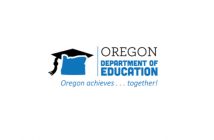((L-R) Moderator John Charles, left, EDCO Prineville/Crook County Director Kelsey Lucas, middle, and Former UO & NFL Quarterback Dennis Dixon | Photo by Simon Mather)
Autzen legend Dennis Dixon, the University of Oregon standout quarterback who went on to win two National Football League Super Bowl rings, was the star attraction at a sold-out forum held recently highlighting Crook County’s continuing stellar economic performance.
Business and community leaders among a packed house of 180 attendees at the Prineville/Crook County Economic Development for Central (EDCO) Annual Luncheon, at Brasada Ranch resort, heard how the region was emphatically “open for business” and — boosted by the presence of global social network pioneers — leading the charge to a more dynamic diversified future.
The 2023 event featured an economic review of the preceding year delivered by local EDCO branch manager Kelsey Lucas, an update on title sponsor Meta’s expanding Prineville Data Center campus — soon to top a whopping four million square feet of buildings — and a moderated discussion with keynote speaker Dixon, who has progressed from a brand marketing role at Nike to start his own business, DixonFit.
Kelsey remarked that Prineville — established in 1868 — was the oldest community in the Central Oregon region but continued to innovate in terms of industry diversification, nationally-acclaimed infrastructure projects and the collaborative attitude of local leaders and partners.
The city was ranked the 9th Most Dynamic “Micropolitan” area out of 531 U.S. cities by the Heartland Forward institute, based on a variety of economic performance indicators. (Micropolitan statistical areas must have an urban cluster of at least 10,000 people but fewer than 50,000 people).
Crook County also ranked number two among the top counties for incoming investment in Oregon, behind only Deschutes, with a strong showing in factors including business and Gross Domestic Product (GDP) growth, new building permits and federal funding.
Beyond the affordability and a recognized business-friendly, forward-looking culture and the countless outdoor amenities that Central Oregon is famed for, county seat Prineville is home to two Fortune 50 data centers in Meta and Apple, with Meta’s flagship campus being the largest in its entire portfolio.
As a model of environmental stewardship leadership, these large industrial developments have inspired the engineering of the award-winning Crooked River Wetlands initiative and Aquifer Storage and Recovery project to support sustainable water and wastewater needs locally.
Lucas also pointed out that Prineville was one of the only cities in Oregon with 100+ acre industrial sites available for development, at some of the most competitive land and utility prices in the West, along with long-term incentives that could help make large-scale projects a reality.
Prineville is known for offering a collaborative and tightknit community and an economy that was traditionally driven by origins tied to the land in agriculture, forest products, the railroad and manufacturing, now boasts some of the largest employers in the region in the form of the high-technology data centers and supporting sector employers.
Aided by EDCO efforts, Lucas said Crook County’s increasingly “dynamic and diversifying” industry portfolio now includes everything from natural products to building products, high-technology, renewable energy, aviation/aerospace and advanced manufacturing.
She added, “As a community, we are united in our efforts to grow and diversify Crook County’s economic base, ensuring long-term economic vitality, and providing residents with family-wage jobs and the pride of a community dedicated to progress.”
Projects pending for the region across EDCO’s ‘Grow’ (expanding existing businesses), ‘Move’ (attracting outside employers interested in relocating or expanding to the region) and ‘Start’ (at the center of the region’s growing entrepreneurial network) categories, currently featured a high volume of advanced manufacturing and lifestyle products followed by high technology.
The pipeline for Crook County this year was also seeing activity in everything from building products to high-tech, aviation/aerospace, renewable energy, agriculture and food processing industries.
Lucas observed, “The mix of current projects differs somewhat from traditional years. Typically, we have more local companies in growth mode, but this year 83 percent of the activity is in new business recruitment, representing 20 companies, while 12 percent is in expansion and five percent start-ups.”
This represents an anticipated capital investment of close to $3 billion and an estimated almost 2200 associated jobs being created in Crook County.
In terms of the impact of economic development efforts, current activity featured 15 Enterprise Zone agreements (the most popular state incentive locally and across Oregon) for 2023 — a number which has doubled since 2019.
The investment associated with those 15 agreements was just under $6.5 billion and resulting new job count expected to reach over 635, with many companies additionally looking to hire for various roles.
Historically, Crook County has seen 32 total Enterprise Zone agreements with companies since 2007, when the local program was initiated, out of 49 traded-sector projects — representing an overall investment of over $10 billion and 2423 new jobs created in Crook County.
Lucas said, “Not only has there been a consistent stream of activity on the industry side but also on the development side, including the former wood grain mill site in Prineville which was one of Crook County’s top employers and has now been redeveloped into over 150,000 square feet of available industrial space, in various buildings on campus as well as pads for additional potential growth on site.”
Tom McCall Industrial Park has also seen significant industrial activity, with 21,000 of light industrial space going up through Empire Construction & Development and another 18,000 sq. ft. under construction for further spec development and build-to-suit projects. Similarly, Baldwin Industrial Park currently has 27,000 sq. ft. available in light industrial space split into two buildings, with office space included and only one previous tenant.
Lucas added, “Prineville is one of few cities state-wide with parcels of over 100 acres left for large-scale development. Most of the state projects that come through Business Oregon are in that 100+ acre range, which are large job creators, so we’re one of few cities that can meet proposals for those types of projects.
“This year, many of our potential projects have been looking in the one- to five-acre range, which we’re also able to accommodate through the different industrial park developments going on. The Prineville airport has also seen increased interest in hangar leases and development with infrastructure in place and runway access for general aviation and aerospace manufacturing businesses.”
Crook County’s population was predicted to grow by 8 percent in the next five years, with top age demographics being in groups 20-24, 35-44 and 65+, illustrating a balance of young families and retirees.
If the labor pool were to continue growing at the same rate there would be 1,028 new jobs by 2027, in part facilitated by the industrial land capacity and infrastructure in place to support those roles.
Between 2000 and 2022 there was a 35.5 percent total growth in population, with a 38.3 percent growth in per capita income for the same period and a further 9.7 percent increase anticipated for the period 2022-27. Around 14 percent housing vacancy existed to support such growth in population and workforce.
Lucas said, “Our updated List of Top employers from 2022 shows the diversification that the county has seen in the last decade through new development, with a good representation from traded sector businesses as well as education, construction, hospitality and leisure and public administration.
“Crook county was actually the first county in Oregon to fully recover all jobs lost during the pandemic and the increase in firms and employment since the Great Recession, post-2008, has created more resilience in our economy.
“The main driver for why we had a more modest recessionary impact was the hi-technology industries — along with information, professional & business services and construction jobs that provided much-needed stability to Prineville.
“Even more notable is the significant increase in county wages, as those industries bumped us up to number six for highest wages in the state, and number one for rural counties in Oregon.
“The city has also seen more housing permits in 2022 than any other year, and business permits have followed suit. Crook County is number two in the state of Oregon for new building permits following Deschutes County at number one.”
Special mention went to EDCO’s work in helping high-end, gear-hauling product company SherpTek — which makes modular and versatile flatbeds, truck decks and accessories — in its move to a new base at the old wood grain mill site in Prineville, winning the Oregon Economic Development Association (OEDA) business success story of the year.
The award looks at innovation, originality and collaboration between local regional and state entities. Sherp Tek is already expanding and adding jobs and equipment to help drastically reduce lead times, from six-eight weeks to six-eight days.
Lucas said other things going on behind the scenes included the upcoming ten-year expiration for the Enterprise Zone program, with the process begun to seek renewal at local and state level. EDCO officials were among a recent delegation that urged state lawmakers to continue the property tax breaks program to spur business investment.
They spoke as the Senate Finance and Revenue Committee considers bills to renew enterprise zones and long-term rural enterprise zones, both now set to expire in 2025. Senate Bill 134 would extend the use of enterprise zones, and Senate Bill 135 would do the same for long-term rural enterprise zones, both through 2032.
Under enterprise zones, cities and counties may exempt new or expanding businesses from property taxes for three to five years. Under the long-term zones, exemptions can last from seven to 15 years, but they are limited to counties with greater economic challenges, such as persistent unemployment.
The program has led to $6 billion in investment and created 1,000 construction jobs and 500 permanent jobs.
Jon Stark, chief executive of EDCO, described it as, “Simply the number one tool that local communities have to recruit, retain and expand businesses in Oregon,” adding that any short-term losses in property taxes were worth the long-term gains in employment and business growth, plus the expectation of future tax collections when the exemptions sunset.
Lucas said other local initiatives included new marketing efforts regionally with Redmond Airport featuring a lead generation campaign targeting specific businesses, and more involvement with air service development talks looking at new routes and performance of existing routes.
An entrepreneurial ecosystem technical assistance process was to be initiated next month largely funded by Meta, looking at workforce development opportunities in areas connected to digital skills development.
Meta Community Relations Manager William Marks gave an update on data center operations and expansion plans.
He said the tenth and 11th buildings were currently under construction on the Prineville campus, spanning around 450,000 sq. ft. each and bringing the total square footage of the campus to around four million sq. ft.
In 2021, the parent company of Facebook changed its name from Facebook, Inc., to Meta Platforms, Inc., to “reflect its focus on building the metaverse” referring to the integrated environment that links all of the company’s products and services.
The expanding footprint of data center was needed to handle the ever-growing processing and storage needs of the company’s family of apps including Facebook, Instagram, WhatsApp and the Metaverse. “All that processing power is right here in Prineville, one of only 14 places in the world that has an operational metadata center,” he added.
The company has been an integral part of the Prineville community now for over ten years, since the original building inception in 2010, and the continued growth was a testament to an “excellent relationship” between a small community and large corporation in a rural area. He said the most rewarding part of his job was the partnerships built with people, particularly students and the school district.
Their commitment to Prineville and Crook County includes the support they have provided for the community, especially the schools, and the data center has consistently provided grants to local projects and nonprofits for many years.
Marks said Meta would announce another round of grants in April donating $210,000 to local community partners like Family Access Network and Mountain Star Family Relief, which would take its direct charitable giving to $3.6 million in Crook County.
The ongoing investment in Oregon, now passing $2 billion, featured 1,000 skilled trade workers onsite at peak construction, and 350 operational jobs in the facilities plus many more in the support ecosystem.
As well as new construction, older buildings were continually being retrofitted and updated. As with every other data center in the Meta group, Prineville is supported by 100 percent renewable energy, including two solar projects located in Oregon.
Marks said in Prineville they were also going to restore 200 percent of water used back to the watershed in a variety of ways with preservation and restoration efforts, including restoring Ochoco Nature Reserve’s habitat and improving trails for family use.
The luncheon also saw moderator and one of the most accomplished athletes in Portland State University Football history and later Atlanta Falcon, John Charles, introduce Dixon — who is widely regarded as one of the best and most exciting players in University of Oregon football history.
Dixon was a candidate for the prestigious Heisman Trophy award before suffering a season-ending knee injury and still won Pac 10 Player of the Year honors. He went on to be selected in the fifth round of the 2008 NFL Draft by the Pittsburgh Steelers and spent four seasons with them, winning a Super Bowl, then was part of a second championship team with the Baltimore Ravens in 2012.
After football, Dixon transitioned into the business world, working at Nike’s Portland headquarters within the Jordan Brand and in Los Angeles training young athletes. He gained vital experience and now operates his own training and health & wellness business, DixonFit.
Dixon said his entrepreneurial lesson included, “Learning to be patient and to know your worth and value.”
The trust factor was of high importance, and he advised, “In career transitions you need to be proactive and always thinking about the next step. I knew football was not going to last forever so needed to prepare for the next step.
“With DixonFit I want to continue to be my best self. I have been a champion on the field and a champion off it and try to be a model to implement what I learned in elite sport.
“I particularly enjoy working with youngsters and giving back to the community as much as possible, including giving talks to kids in high schools in Oregon stressing the importance of education. You let kids know they are more than enough and build trust and rapport.
“It took courage on my part to realize my own brand worth and I am building a team of like-minded people in my business. I always stress the importance of relationships, and not to burn bridges — I don’t want to move fast, just correctly.”
With experience in multiple fields and competing at the highest levels, Dixon expressed excitement at embarking on his true passion — taking his experience through success and adversity and building up the people and communities around him, adding, “I am talking about living a life of purpose.”





